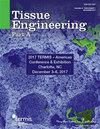组织型三维细胞模型模拟牙体形成过程中的上皮-外胚层双层结构。
引用次数: 0
摘要
牙齿生成是牙齿发育的复杂过程,涉及口腔外胚层上皮细胞和来自头神经嵴的外充质细胞之间复杂的相互作用,并受主要信号通路的调控。牙齿发育异常为罕见病的临床诊断提供了宝贵的启示。在接受分子分析的罕见病患者中,有超过 30% 的人诊断错误。为了寻找最新的技术和方法来研究导致牙齿矿化组织异常的新的候选基因变异的病理生理学,我们利用从牙髓中提取的人类或小鼠髓母细胞样细胞系和牙本质母细胞,开发了一种独创的牙齿有机体模型。这种体外三维细胞模型再现了牙齿发育钟形阶段釉母细胞和牙本质母细胞之间的两个主要区室,分别是釉质和牙本质形态发生的特异区室,模拟了牙齿形态发生钟形阶段的上皮-间质相互作用,将有助于研究釉质和牙本质遗传异常,从而对新发现的突变(意义不确定的变异-VUS-或新的候选基因)进行功能验证。本文章由计算机程序翻译,如有差异,请以英文原文为准。
Organotypic 3D cellular models mimicking the epithelio-ectomesenchymal bi-layer during odontogenesis.
Odontogenesis, the intricate process of tooth development, involves complex interactions between oral ectoderm epithelial cells and ectomesenchymal cells derived from the cephalic neural crest, regulated by major signaling pathways. Dental developmental anomalies provide valuable insights for clinical diagnosis of rare diseases. More than 30% of rare diseases patients who undergo molecular analysis suffer from diagnostic errancy. In the search for up-to-date technologies and methods to study the pathophysiology of new candidate genetic variants, causing tooth mineralized tissues anomalies, we have developed an original model of tooth organoids with human or mouse cell lines of ameloblast-like cells and odontoblasts derived from the pulp. This in vitro 3D cellular model reproducing the two main compartments of the bell stage of tooth development between ameloblasts and odontoblasts, specific to enamel and dentin morphogenesis, respectively, mimics the epithelio-mesenchymal interactions during the dental bell stage of tooth morphogenesis and will facilitate the study of enamel and dentin genetic anomalies, allowing the functional validation of newly identified mutations (variants of uncertain significance -VUS- or new candidate genes).
求助全文
通过发布文献求助,成功后即可免费获取论文全文。
去求助
来源期刊

Tissue Engineering Part A
CELL & TISSUE ENGINEERING-BIOTECHNOLOGY & APPLIED MICROBIOLOGY
自引率
0.00%
发文量
0
审稿时长
3 months
 求助内容:
求助内容: 应助结果提醒方式:
应助结果提醒方式:


